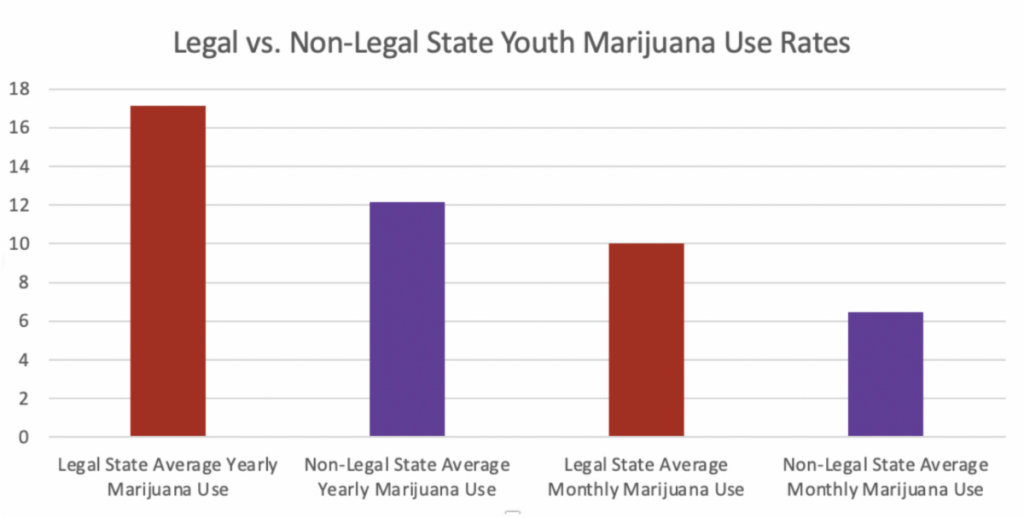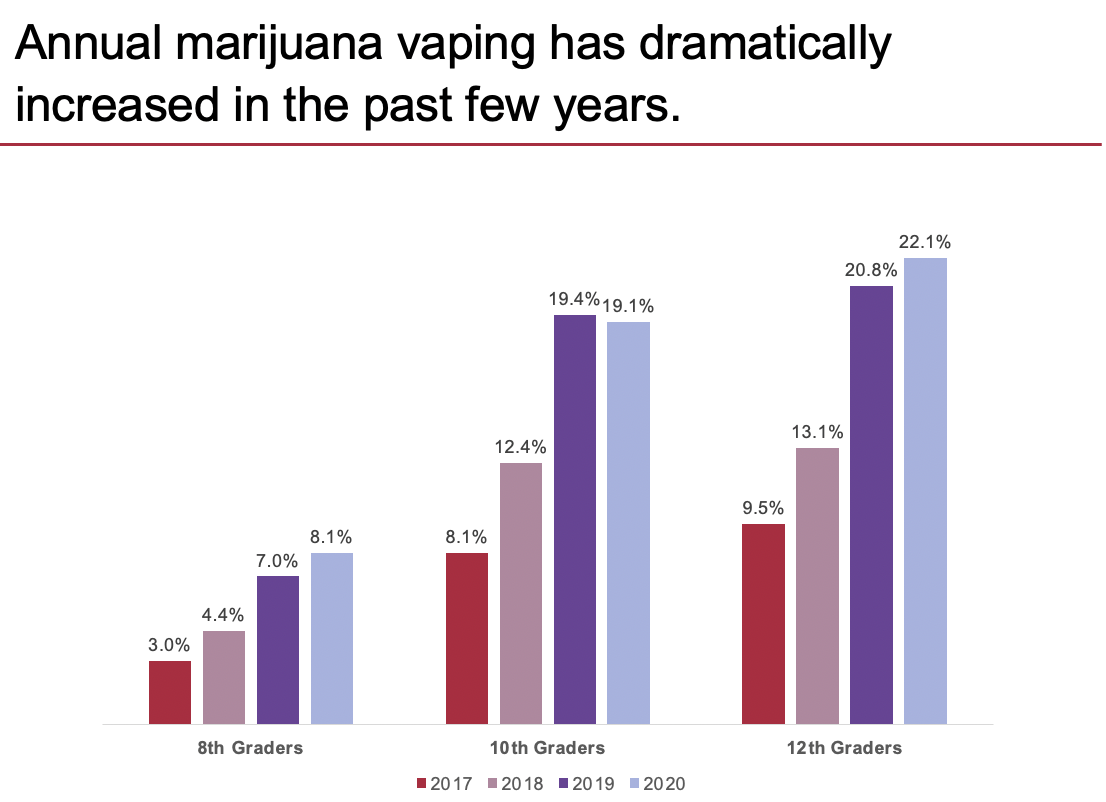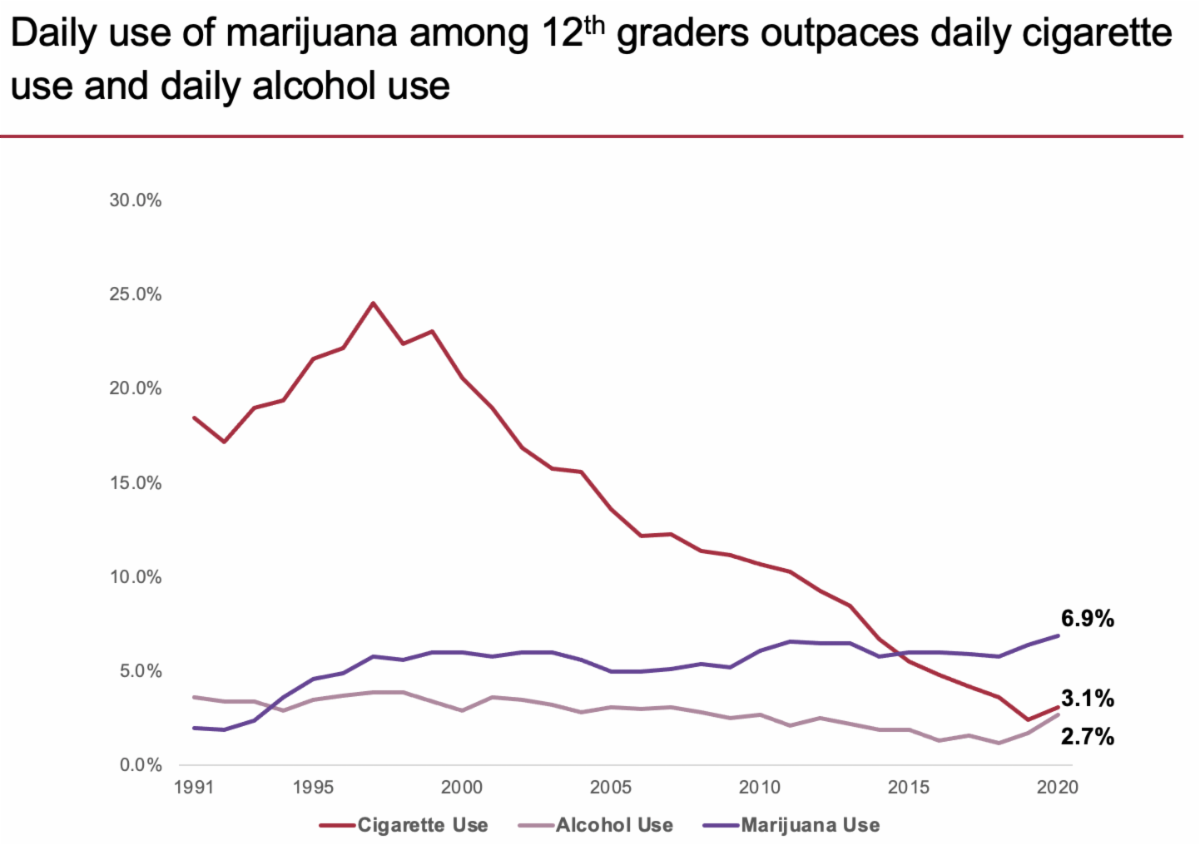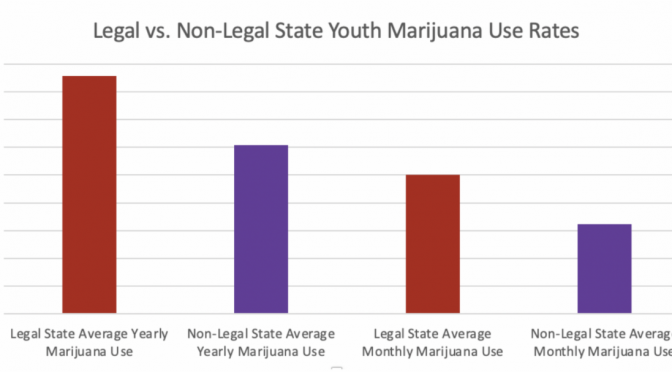Youth drug use increases in legalized states
State-level data from the National Survey on Drug Use and Health, the most authoritative study on drug use conducted by the Substance Abuse and Mental Health Administration (SAMHSA), found significant increases in youth marijuana use in several recently legalized marijuana states versus last year. At the same time, mental illness indicators worsened across the country while alcohol, cocaine, and tobacco use dropped, especially among young people.
“Once again, marijuana is the stubborn outlier – the only drug significantly going up in several areas across the country,” said Dr. Kevin Sabet, president of Smart Approaches to Marijuana (SAM) and a former senior drug policy advisor to the Obama Administration. “Weed normalization and commercialization has consequences, and unfortunately we are being hit hard while for-profit pot companies continue to enrich themselves.”

According to the data, adolescents aged 12-17 using marijuana in the past year significantly increased versus last year in the legalized states of Nevada, Oregon, and California. All other legal states showed increases as well, but versus last year they did not reach statistical levels of significance.
There were large increases not witnessed in non-legal states: Nevada experienced a 17.4% increase, while Oregon and California witnessed increases of 15.4 percent and 14.5 percent, respectively. States should study the data before they legalize.
Data shows youth in California use more
The data additionally show a statistically significant, 25.5 percent increase in past-month use in California among those aged 12-17. Marijuana billboard advertising on interstate highways in California leads to normalization and the false belief that pot is harmless.
The data also show us that youth use in states that have “legalized” marijuana far outstrips use in states that have not. Past-month marijuana use among young people aged 12-17 in “legal” states is 54.5 percent higher than past-month marijuana use among 12-17-year-olds in “non-legal” states (10% versus 6.47%). Past-year marijuana use among this age group in “legal” states is 41 percent higher than that of 12-17-year-olds in “non-legal” states (17.12% versus 12.14%).
And earlier this year the Colorado Healthy Kids Survey showed that teens were using the high-THC concentrates at record rates.
Washington, DC leads the way
Finally, the data also show that Washington D.C. has catapulted to the top of the list for youth first-time use, closely followed by Vermont. (We hope this fact deters the federal government from allowing pot shops in DC!) This is concerning given that Vermont’s legislature just recently passed a bill allowing for commercial sales. Maine and Nevada also witnessed statistically significant increases in this metric as well.
Versus ten years ago, legal Vermont, DC, and Maine show significant increases in past month adolescent use, while non-legal states levels are flat across the U.S. as a whole. Use among young adults aged 18-25 skyrocketed, especially in legal states. In non-legal Virginia and New York, adolescent past year marijuana use significantly fell, as it did in the non-legal Southern region of the United States.
At the same time, mental health indicators, including major depressive episodes, suicidal thoughts, and serious mental illness have worsened.
“Today’s data further cements the need to hit pause on the rush to expand the commercialization of marijuana,” said Sabet. “We call on state lawmakers across the nation to halt all efforts to legalize marijuana and we urge Congress to pass a bill to streamline the process for research on the potential health & safety impacts of marijuana. With the year over year increases in use, we cannot afford to continue this misguided approach to drug policy – an approach that puts profits over our youth.”
Vaping Trends upward, despite COVID and harms



